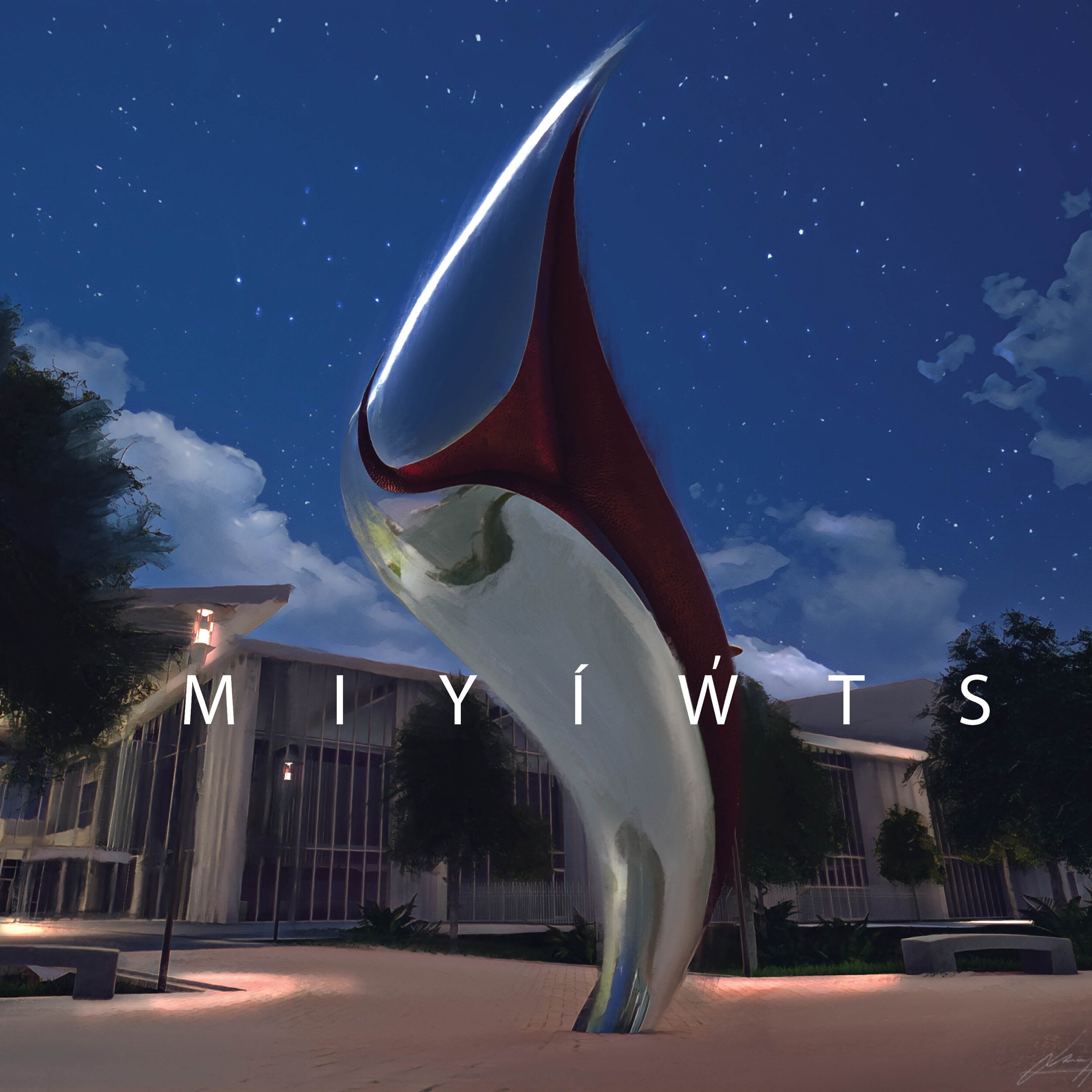MIYIWTS
LHEWQUM
An important attribute to my work is the idea of ‘wonder,’ and the power that ha over a spectator. For Centuries the ‘spectacle’ in ancient cultures has affected people, where sculpture and architecture placed viewers in a state of ‘wonder.’ Often questioning their own realities in relationship to that object.
LHEWQUM - Blue Mussel - 2020
RECONCILIATION POLES
Reconciliation Pole Vancouver, BC Canada.
“In 2007, Davita Marsden had a vision of a totem pole smashing into the ground, burning through the layers beneath.
Twelve years later, the Anishinaabe Indigenous education teacher shared that vision with Chas Desjarlais, Vancouver’s district vice principal in Indigenous education.
On Monday, the two looked on as the vision became reality: a 44-foot-tall reconciliation pole outside the Vancouver School Board’s headquarters, set to be unveiled on Friday along with two welcoming poles as a symbol of reconciliation spanning generations and cultures.
The purpose of this project was to bring all nations together,” said Desjarlais, who is Nehiyaw-Metis and a member of the Cold Lake First Nations. “We acknowledge that we all come from different places, but we’re trying to work together in different ways.”
The pole was made by master Squamish carver Xwalacktun and his son James Harry. Two welcoming figures, one male and one female, were made by Musqueam artist William Dan and his family and Musqueam siblings Chrystal and Chris Sparrow, respectively.
Harry said the poles are symbols of how knowledge transcends generations, even in the light of the suffering endured by Indigenous peoples in Canada’s residential school system.
“We focused in the past on how negatively residential schools have treated us, but we want to move forward in a positive way,” says Harry. “(Carving) wasn’t just an artform. It was a way of life for us. We would pass and share stories through these carvings.
Marsden says it is a way of “demystifying” Indigenous education through a project that has been driven by women — and clearly acknowledging the Vancouver School Board is on unceded Squamish, Musqueam and Tsleil-Waututh territory.
“It’s a form of decolonization,” she says.”
Carving a Legacy
The red cedar tree is estimated to be 350 years old. Both James and Rick Harry worked in collaboration on this 44’ piece of beautiful wood.
Xwemelch’stn - Fast moving water of fish (2019) James Harry
XWEMELTCH'STN
X̱wemeltch’stn - Fast moving water of fish
The story of place begins with the Capilano river. The riverbanks of British Columbia have always been home to Coast Salish people. We formulated our lives around rivers and Oceans. The salmon that swam up X̱wemelch'stn were of the utmost importance; its richness of nutrients and abundance in numbers fed our people for thousands of years. X̱wemelch'stn (Capilano River) has ancient origins and has been an integral part of the Squamish peoples lives since time immemorial.
Xwemelch’stn - Fast moving water of fish (2019) James Harry
C O N C E P T
We as the Squamish people have always shared an interconnection with the land, animals and water. The life cycle of the salmon mimics the lifespan of the river. Everything around this cycle continues to shrink; the salmon, trees, and water. This piece serves as a reminder to protect and give back to the life that the land has given for thousands of years.
Part of my job as the artist is to take my teachings and pass down the stories from our elders. This work is a symbol of the resurgence of Salish art and the reclamation of space. As we move into the future our art will continue to evolve and grow, my goal is to integrate our culture into the proudest segments of our society.
Xwemelch’stn - Fast moving water of fish (2019) James Harry
THE SCULPTURE
This work mimics the shape of the cedars and firs that once occupied this land. Old growth trees are becoming increasingly difficult to acquire for carving, which led me to use metal as an alternative material to cedar. Through my years at Emily Carr I integrated this concept into my art practice and it has now become an integral part of my work. Utilizing modern materials while staying true to the visual language of Coast Salish design has been the core component of my art practice. This public art opportunity is a great fit for my continued work of shifting perspectives on Indigenous art.
The imagery depicted on the post are two salmon swimming in unison. There are eggs in between representing rebirth and the cycle of the salmons life. As a whole, the design follows the movement of the river.
I have designed the sculpture so that you are forced to move around it to read the story. This makes for a more bodily and visceral experience.
Xwemelch’stn - Fast moving water of fish (2019) James Harry
“MY PEOPLE WILL SLEEP FOR ONE HUNDRED YEARS, AND WHEN THEY AWAKE, IT WILL BE THE ARTISTS WHO GIVE THEM BACK THEIR SPIRIT.”
James Harry - Project Xwemelch’stn (2019)
Xwemelch’stn - Fast moving water of fish (2019) James Harry
Cedar Bowes - Xwemelch’stn - Fast moving water of fish (2019) James Harry
Unveiling Ceremony
Snowbird song
XWEMELCH'STN - VINYL
DOUBLE HEADED SERPENT
THE GRATEFUL HERON
“Lauren and I have been collaborating on artworks for the last two years. We’ve been amalgamating our styles together and really trying to come up with something that is a balance of both of our styles and techniques. We’ve arrived in a place where we’re interweaving our culture backgrounds into our works,” Harry told the Straight in an interview with Brevner in front of his mural.” - The Georgia Straight
Process Shot of our Collaboration (James Harry & Lauren Brevner)
“We came to this wall and the shape of the wall reminded James of a long house. Traditionally, a long house is a place of gathering, sharing food and stories, so we wanted to use this space to tell a story from my background and put a Salish twist on it,” said Brevner.
Antelope Canyon
Crossing off one of the top 10 places I've wanted to visit: Antelope Canyon in Page Arizona
SALMON HOUSE POST PROJECT
House Post for Van Horne Elementary School - James Harry & Aaron Nelson Moody (2017)
































